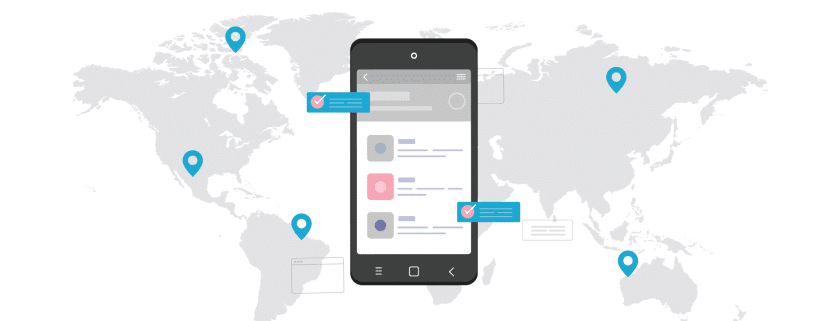In the dynamic landscape of mobile app development, the significance of localization strategies cannot be overstated. As businesses strive for global market success, the adaptation of apps to resonate with diverse audiences is paramount.
The nuances of cultural preferences, language intricacies, and user behaviors play a pivotal role in this process. However, merely translating content is not enough to capture the essence of a localized experience.
To truly excel in this endeavor, a deep understanding of localization strategies is essential. By unraveling the complexities of mobile app localization, companies can pave the way for unparalleled international growth and user engagement.
Unlocking Global Reach with Mobile App Localization
Achieving global reach through mobile app localization involves overcoming language barriers, a crucial aspect that can significantly impact user engagement and retention rates.
Understanding the nuances of different languages and cultures is key to effectively tailoring the app’s content and features to resonate with diverse audiences worldwide.
Navigating Language Barriers in App Localization
When it comes to designing localized mobile apps, considering various aspects of the user experience is crucial. From language nuances to cultural preferences, every detail plays a significant role in ensuring the app resonates with the target audience.
Design Considerations in App Localization
Navigating language barriers effectively is a critical aspect of ensuring successful app localization, especially when considering design considerations in the process.
In mobile app localization, the design plays a vital role in ensuring that the app is culturally appropriate and user-friendly for the target audience.
Factors such as color schemes, iconography, layout, and text orientation must be carefully adapted to resonate with the global market while maintaining the app’s functionality.

Mobile App Localization: Key to Worldwide User Engagement
Effective mobile app localization is the cornerstone of engaging users worldwide. By customizing the user experience to suit diverse cultural preferences and language nuances, apps can resonate more deeply with global audiences.
This tailored approach is essential for achieving success on a global scale and fostering lasting user engagement.
Localizing User Experience for Global App Success
To achieve global app success, it is crucial to implement effective marketing strategies tailored to different regions when localizing user experience. By understanding the cultural nuances and preferences of target audiences, developers can enhance user engagement and retention rates.
Utilizing localized content, language, and design elements is key to creating a personalized experience that resonates with users worldwide.
Marketing Strategies for Localized Mobile Apps
Localizing mobile apps for different regions requires strategic marketing approaches to effectively engage a global audience and ensure the success of the app on a worldwide scale.
Tailoring promotional campaigns to suit the cultural preferences, language nuances, and market trends of specific regions is crucial.
Leveraging localized social media platforms, collaborating with local influencers, and utilizing targeted advertising are some effective strategies for maximizing the reach and impact of localized mobile apps.
The Impact of App Localization on Global Markets
App localization plays a pivotal role in reaching diverse global markets by fine-tuning mobile apps to resonate with cultural nuances. Understanding the unique preferences and behaviors of target audiences is paramount for successful localization efforts.
Mobile App Localization: Adapting to Cultural Nuances
Adapting mobile apps to cultural nuances is critical for success in global markets.
One of the key challenges faced in this process is overcoming technological barriers.
Understanding and addressing these challenges will be vital for effective app localization strategies.
Technological Challenges in App Localization
Successfully navigating the global market requires a keen understanding of the technological challenges that come with app localization. From language nuances to differing technical standards, ensuring seamless functionality across various devices and operating systems is paramount.
Compatibility issues, varying network speeds, and data privacy regulations further complicate the localization process. Overcoming these obstacles demands a meticulous approach, leveraging advanced tools and technologies to deliver a tailored user experience worldwide.
Essential Steps in Effective Mobile App Localization
Implementing a comprehensive localization strategy is crucial for ensuring that a mobile app resonates with users across different regions and cultures. To effectively localize a mobile app, several essential steps need to be followed.
The first step in mobile app localization is conducting thorough market research. Understanding the target audience’s preferences, cultural nuances, and language requirements is vital. This research helps in tailoring the app to meet the specific needs of the users in different regions.
Next, it is essential to translate all text within the app accurately. Hiring professional translators who are native speakers of the target language ensures that the translations are culturally relevant and free from errors. Additionally, adapting the app’s visuals, including images, icons, and graphics, to suit the preferences of the target audience enhances user engagement.
Testing is another critical step in mobile app localization. Conducting linguistic and functional tests helps identify any translation or functionality issues that may have arisen during the localization process. User feedback during this stage can provide valuable insights for further improvements.
Cultural Adaptation in Mobile App Localization
Cultural adaptation in mobile app localization plays a vital role in measuring the impact of tailored strategies.
Understanding how cultural nuances influence user engagement is key to maximizing the effectiveness of localization efforts.
Measuring the Impact of Mobile App Localization
Cultural adaptation in mobile app localization is essential for catering to diverse global audiences.
This process involves tailoring content to resonate with users from different cultural backgrounds, ensuring that the app is relevant and engaging.
Content Adaptation for Global App Audiences
Effectively adapting content for global app audiences is crucial in mobile app localization to ensure optimal user engagement and satisfaction. Cultural nuances, language preferences, and visual elements play a significant role in content adaptation.

Conclusion
In conclusion, mobile app localization is crucial for reaching global markets and engaging users worldwide. By adapting apps to different languages, cultures, and preferences, companies can significantly increase their chances of success in international markets.
Effective localization involves thorough research, translation, and cultural adaptation to ensure that the app resonates with users from diverse backgrounds. Embracing mobile app localization strategies is essential for companies looking to expand their reach and maximize their impact on a global scale.
How Can Mobile App Localization Impact a Company’s Overall Brand Reputation in Different Global Markets?
Effective mobile app localization can significantly influence a company’s brand reputation in diverse global markets by demonstrating cultural sensitivity, ensuring linguistic accuracy, and providing a seamless user experience. Consistent branding across regions fosters trust and enhances customer engagement.
What Are the Key Challenges That Companies Face When Localizing Their Mobile Apps for International Audiences?
When localizing mobile apps for international audiences, companies often encounter challenges related to cultural nuances, language barriers, technical compatibility, and differing market preferences. Addressing these obstacles effectively is crucial for successful global expansion.
How Can Companies Measure the Success of Their Mobile App Localization Efforts in Different Regions?
Companies can measure the success of their mobile app localization efforts in different regions by tracking metrics such as downloads, user engagement, retention rates, and in-app purchases. Analyzing user feedback and conducting market research also provide valuable insights.


